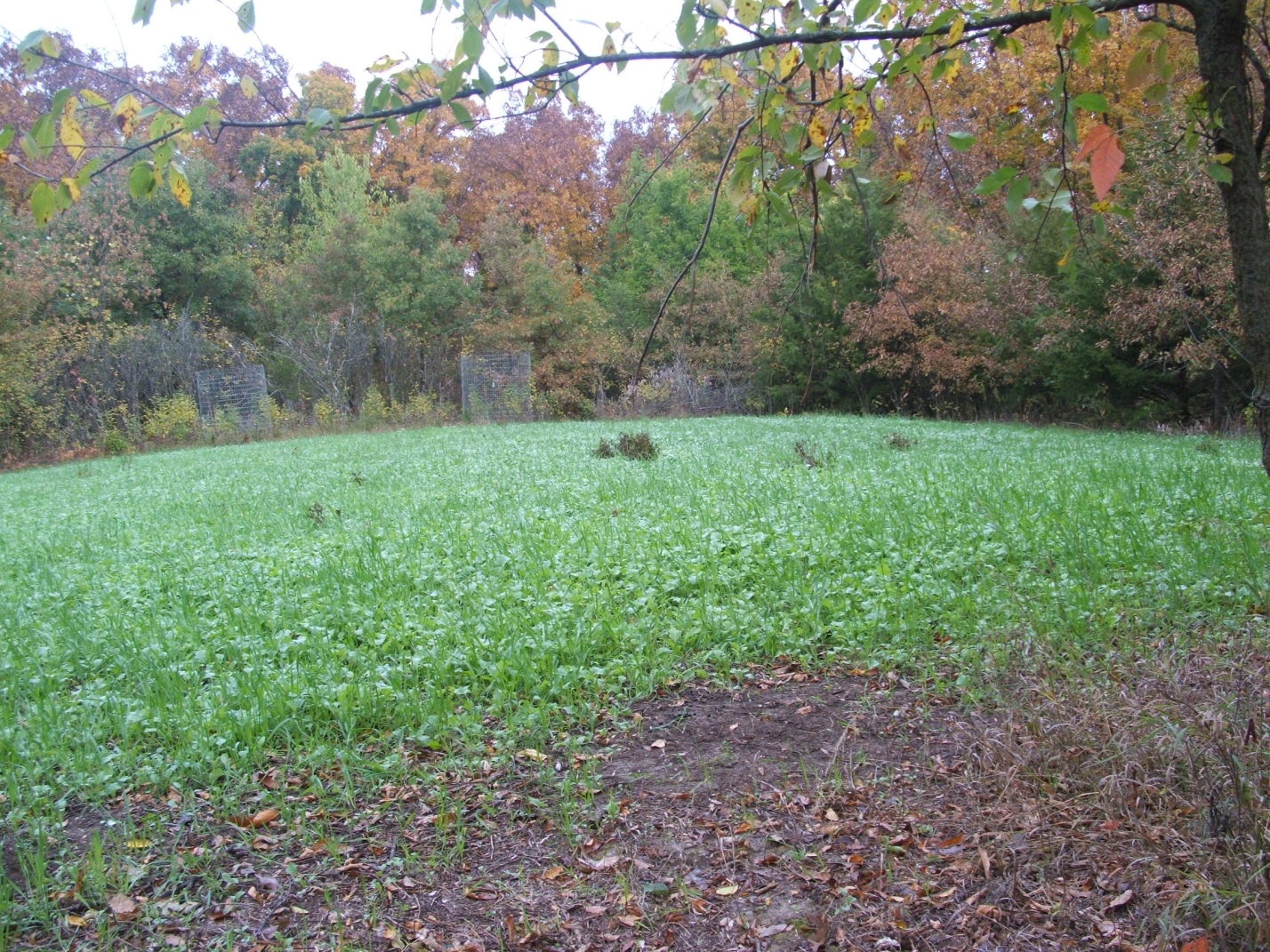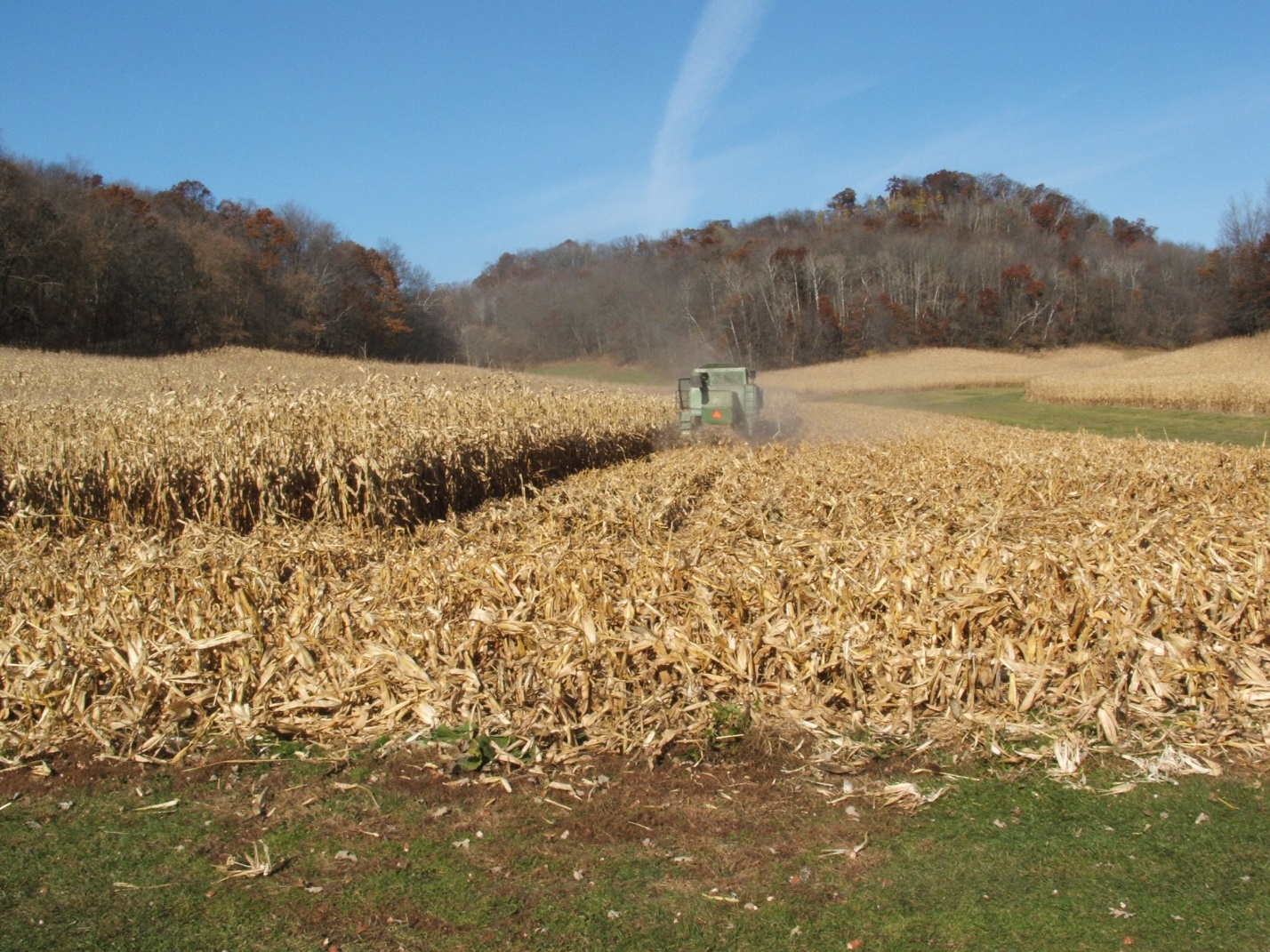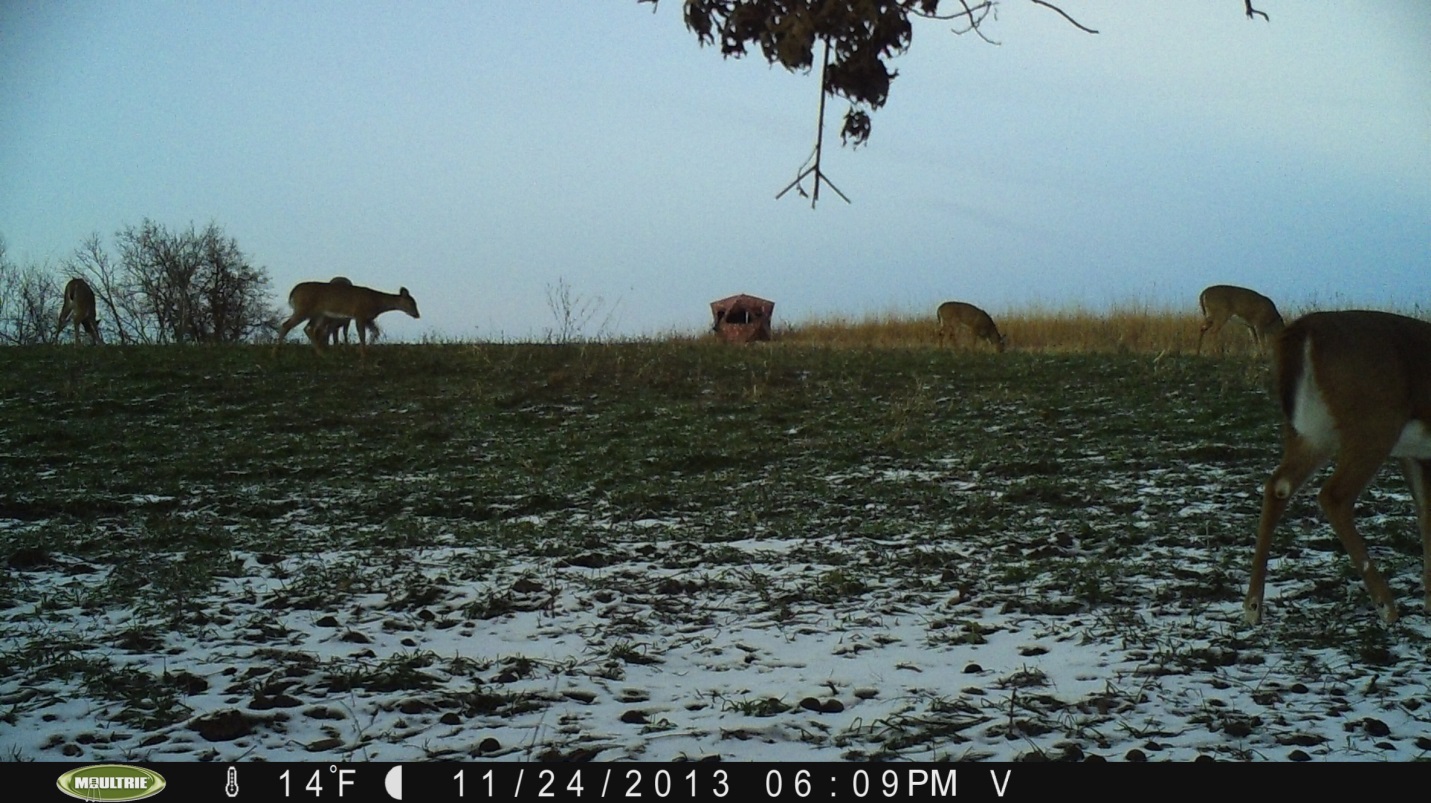Buck Movement During the Rut/ Playing the Odds (A version of this article is printed in the November 2014 issue of Iowa Sportsman magazine)
“Boy, I was out last night and saw all kinds of chasing and grunting by three different bucks. Every doe that came out into that field got chased and harassed by those bucks. The rut must be early this year!” Have you heard this before…maybe even witnessed similar action on an evening hunt in mid-October? I’ve heard statements like these more times than I can remember. And I’ve witnessed action in mid-October that could make any archery hunter think the rut is in full swing. But the timing of the rut changes very little year to year. How the different bucks in the deer herd act out their roles each fall can vary quite a bit based on their age and the structure of the herd itself. Knowing the differences can help us as hunters.
For the purposes of this article, I am going to assert that the rut across the Midwest and up through the Northeast starts the third week in October and ends at the end of November. This then, is a six week guide to the local buck herd broken down by age class. I like to break buck movement and tendencies into three groups: yearling bucks, adolescent bucks (2 and 3 year olds), and mature bucks (bucks 4 years old or greater). Bucks are of course individuals, and each one has its own habits and characteristics…but in general bucks of certain age classes are similar. And I believe it is wisest for most hunters to play the odds when hunting whitetail bucks instead of trying to chase uncommon traits.
October 15th-October 25th
Each year, by the third week of October the fall harvest is well under way. The farm landscape is seeing massive changes. Soybeans and corn are leaving the fields. In some areas, fall tillage is starting to take place as well. If acorns were dropping many trees have emptied their limbs or are getting near the end. The days are getting noticeably shorter, the nights cooler. Also, by this time, the odds are fairly good that at least one doe in the area has come into heat. Although the fall harvest is under way, food is still very abundant.
During this time frame, yearling bucks and adolescent bucks can be seen on normal feeding patterns and during daylight hours. Yearling bucks can be seen feeding and traveling with and around doe family groups. Adolescent bucks can be seen together in bachelor groups that have not broken up yet or as individuals. Because there is a very good chance at least one doe has come into heat, and bucks testosterone levels are high, it is common to see chasing (harassing) of does near feeding areas from yearling bucks and adolescent bucks. Sparring takes place routinely in the evenings at food sources by yearling and adolescent bucks.
Mature bucks during this time frame are mostly settled into their fall home ranges which can be very close to or quite far from their summer ranges. For the most part, mature bucks are not traveling all that much during the day yet especially in areas with hunting pressure. In areas with limited or no hunting pressure, mature bucks can be caught during daylight hours on food sources at dusk. Mature bucks will be checking does during this time as well, but don’t exhibit the more reckless chasing and harassing behavior of more juvenile bucks.
Scraping and rubbing is starting to escalate especially adjacent to food or water sources. Bucks of all age classes will be using rubs and scrapes. It is common to see pockets of buck sign (scraping and rubbing) to open up and then go cold. As hunters our best approach to hunting bucks during this time frame is to hunt preferred food sources on evening hunts…keying on those areas that show fresh buck sign.
October 25th-November 10th PEAK HUNTING
The fall landscape has not changed all that much from the past weeks. By now, it is probable that a few fall frosts have hit. The fall harvest in many areas is complete. The preferred food sources of deer in many areas are making a dramatic shift from Ag sources to food plots and natural habitat. Green food sources like winter rye, oats, alfalfa, and even brassicas are still drawing deer or starting to see more action. Standing dried soybeans or cut corn is starting to pull in a good portion of deer where available. In general however, there is still an overabundance of food available to the local deer herd. By October 25th, a combination of testosterone levels and the likelihood of a doe or two coming into heat are triggering a rapid increase in rutting action of bucks. It is even more probable that by now a doe or two have come into heat within a buck’s home range. The last week of October can start out slow and heat up at a very fast pace.

Interior plots like this are great places to hunt during peak hunting. Scraping and rutting occur naturally in these areas…hunt morning or night.
Yearling bucks and adolescents are really starting to harass the local doe population. They can also be seen traveling farther and farther each day and during daylight hours. Adolescent bucks are becoming less tolerant of other bucks as they become more and more frustrated in waiting for breeding season. Evening food sources can actually be void of doe family groups as adult does avoid being chased and harassed by yearlings and adolescents. Yearlings can actually start to show signs of rut “fatigue” as their subordinance forces them to suppress their rut activities. Adolescent 2 and 3 year old bucks are stealing the show right now putting on impressive displays of rutting activity at food sources and around other deer. Two and three year old deer are traveling throughout their entire home ranges in search of any estrous doe. Sign posts like scrapes and rubs are getting pounded more frequently with every adolescent buck taking part in the action.
Mature bucks will start to show up (if they haven’t already) during daylight hours on any given day. However, they will not exhibit the reckless chasing habits of younger bucks. Their presence alone on a food plot for example puts other bucks and does alike on edge. Their dominance has already been established. They travel more but with added purpose as they seek any available doe that is in heat. Along with seeking available hot does, any doe that is in heat most likely has a mature buck behind her if there is one in the herd. It is not uncommon to see a mature buck with a doe with other more subordinate yearlings and adolescents hanging around and rutting in the near vicinity. Mature bucks will visit and vigorously rut at sign posts. They will actively seek estrous doe by coming to food sources at dusk and by getting back to bedding areas later in the morning. They will start leaving their core fall ranges, traveling throughout their entire home range in search of hot does. By Halloween each year, buck movement and rutting behavior will be at a fever pitch. This can come on very fast and seems to light up sometimes overnight.
Hunters should continue hunting the best and most preferred food sources in the area on evening hunts. At this time, it can also pay off to start hunting interior food plots or transition areas adjacent to preferred food sources on evening sits. It is possible to call to target bucks out of range with some good response. Sign hunting over or near active scraping areas can also pay off. Also, by October 25th, I start hunting mornings. Hunt morning areas that you can get to without bumping deer. Favorites of mine are funnels or narrow pieces of timber, the downwind side of doe bedding areas, and interior food plots. Go in after light if it helps to not bump deer and stay at least until 9:30…longer if you can; switch to food sources for evening hunts. Movement during this time frame, like any time frame, can be weather dependent. With average or below average temperatures deer movement should be great. Spend as much time as you can in the field…THIS IS PEAK HUNTING!
November 10th-November 20th
This is peak breeding. The fall harvest, in most parts, is complete. Fall tillage is occurring or is complete. Preferred food sources are congregating deer more than earlier in the year, although a lot of food is still available. It is common to see fawns without their mothers. Hunting pressure in many areas has already or can start taking a toll on the movement of the deer herd. The majority of the local doe population is now coming into heat.

By mid-November, the fall harvest is either happening or done in many parts. Cut corn like this can be a preferred food source. Deer will start congregating more around preferred food sources.
Yearling bucks in areas with good buck to doe ratios, mature deer in the herd, and with modest overall populations, will do very little if any breeding. They can be seen traveling to and from bedding and feeding with or like doe family groups…or running around with very little purpose.
Adolescent bucks are traveling a good deal. They are traveling all parts of their home range seeking any available hot doe, and staying with and breeding any doe they find that is in heat. If they find a hot doe, their movements are limited to her movements. As more doe come into heat, an adolescent buck will travel less and less as the availability of estrous does is higher. Competition between adolescent bucks can be intense in areas with modest populations and good ratios of bucks to does. Adolescents, although not the dominant deer in the herd, will do a great deal of breeding.
Mature bucks will do the lion share of breeding. They will actually travel far less than during the previous period because as more doe come into estrous, they will limit their movements to her movements. During these 10 days, mature bucks will be with a hot doe the majority of the time. They can be seen during any time of the day, but most likely with a hot doe…bedding with her and traveling with her from security cover to feeding. Once a doe is bread and no longer in heat, a mature buck will seek any available hot doe throughout his entire home range. Mature bucks can and will “take” a hot doe from a lesser mature buck or adolescent deer. Confrontations can occur but are usually settled very quickly.
Buck hunting during peak breading can be exceptional, or as frustrating as it can get. Most bucks, besides yearlings, can be tied up with estrous does. Movement can be seen as very sporadic. It is not uncommon to sit for days without seeing a buck only to see 5 or 6 in one sit. Estrous does are calling all the shots…and will attract all the bucks. Adolescent and mature bucks are either with hot does or traveling to find one. Mature and adolescent bucks can abandon scraping and rubbing altogether, in any event sign post activity will decrease during breeding. Again, hunters should focus evening hunts on the best food sources. Morning hunts are best served on the downwind side of doe bedding areas, areas of timber connecting doe bedding areas, and funnel areas. In some instances, mature bucks can be caught “pushing” hot does out to the dead end of thick draws for breeding. Hunt all day; put in your time. Call to any target buck without a doe.
November 20th-End of November
The landscape has changed drastically from 6 weeks ago. Deer are concentrated around remaining preferred food sources. A great majority of does have already been bread…but a few are still coming into heat. Doe family groups are back together and grouped up. Some buck fawns are being dispersed by their mothers and are finding their new home ranges. Some areas have had extreme amounts of hunting pressure on them…these areas will start to be void of deer activity.
Bucks of all age classes are settling back into more of a feeding pattern. However, the remaining does coming into heat will draw the attention of mature bucks and more dominant adolescents. These bucks will travel throughout their entire home ranges looking for the last remaining hot does. Because does are grouped up around preferred food sources and security cover that has had the least amount of hunting pressure…look for good bucks in these areas. Mature and adolescent bucks will move with purpose concentrating on the same food sources as doe family groups. Sometimes, mature bucks will travel to parts of their home range they don’t frequent very much searching out the last does coming into heat.

By late November, doe family groups are back together and congregating around
preferred food sources like this winter rye plot. Bucks will also come here looking for food
and any last doe that comes into heat.
Hunting during this last period can be fantastic…if you have a good food source and if you haven’t over pressured the deer herd. Having a good food source to hunt this time of year can be make or break. Buck hunting the last weeks of November is very similar to other parts of the season. Hunt the most preferred food sources in the area…this could be mature beans, cut corn, brassicas, alfalfa, winter rye, or others. Hunting food sources this time of year can get tricky because of hunting pressure. Deer during this time can become very agitated by hunting pressure. It is important to really concentrate on low impact hunting. Hunt mornings in funnel areas, timber strips, or on the downwind side of doe bedding areas…but in areas you can get to and from without any impact on the deer herd. If you are hunting an area that has seen a fair amount of hunting pressure, you might consider avoiding morning hunts altogether or giving your area a short break. The last days of November hunters should key in on food sources and hunting methods that are low impact to the deer herd. Hunters by this time can also be worn out…sticking with it and grinding it out can pay off to those hunters who don’t quit.
